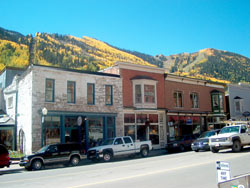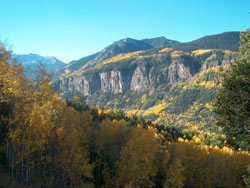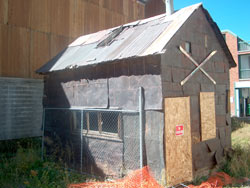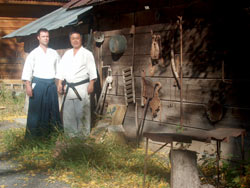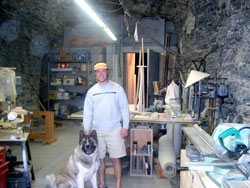by Gaku Homma
Nippon Kan Kancho
October 14, 2003
Having just returned from the Aiki Expo 03 in Las Vegas, I set about putting my thoughts in order. It was an honor to be asked to participate in the Expo and I learned many things throughout the experience. I was impressed by the demonstrations that were held at the Expo, in a number of ways. There were many demonstrations put on by artists of other martial arts that I found to be very well executed with a high standard of skill and understanding. They were an inspiration, and I think all of us as Aikidoka could learn a lot from what was demonstrated there. I personally would like to invite any of the martial artists that attended the Expo to stop by Nippon Kan if they are ever in Denver. Thank you again, for what you taught me.
Doesn’t it always seem that whenever one sits down to write, they are bombarded with distractions? Well, sitting down to write in my office at Nippon Kan the other night, a tremendous amount of commotion erupted in our restaurant, Domo. The wait staff seemed quite excited about something and I stopped what I had tried to begin to see what was going on. I was soon told that “there was a movie star coming to Domo”. I knew that we had a party of about forty scheduled for this particular evening, but I was not aware that it was to include members of the Hollywood elite. I was filled on the facts that this party was for a production company that was in Denver to film the movie “Silver City”. Richard Dreyfus, of Jaws and Close Encounter fame was among the honored guests. Not being much of a movie buff, I was not completely familiar with Mr. Dreyfus’s work, but as a restaurant owner, I went to his table to welcome him and to thank the party for coming to our restaurant. I found Mr. Dreyfus to be quite humble and sincere as he stood to shake my hand and to compliment the restaurant’s service.
As I returned to my office, I thought to myself, was he for real? I don’t mean was that really Richard Dreyfus, I mean was he acting when stood to shake my hand? That is his profession after all, and if he was just acting, I guess I owed him a bit of money for his performance!
He was not acting of course, he is a real person, and his gestures I believe were genuinely from the heart.
Sometimes, the smallest thoughts become big subjects of thought for me and this was turning into one of them. This thought, the kind that usually go in one ear and out the other seemed to be bouncing around in my head.
So my question is, is the actor real when he is acting, or is he real when he is not acting and just being himself. As a martial artist I ask myself the same question sometimes. I wonder which part of my persona is real. Am I real when I am Sensei or am I real when I am being my private self? Sometimes it feels like my private self is wrapped in my professional self, and the lines get blurred. Sometimes it feels like I am two people. I am known as a Sensei with a large dojo and am considered successful, but is this really my life? Or is it a life that has been created by titles I have been given. Which is more valuable? Are they one in the same? This all sounds a little odd, I know, and I promise I am not writing an article for Halloween, they are just reflections that were sparked by meeting Richard Dreyfus the movie star!
I had been told that the Aspen trees were changing in the Rocky Mountains, and that they were at their peak of golden colors. It was a good chance to see the colors change and to visit one of my students in Telluride, Colorado. Located about six hours from Denver by car, the mountain town of Telluride is know for its skiing, and for it’s elite residents. Many of the rich and famous have built mountain homes in Telluride where they spend their holidays and vacations.
- The town of Telluride, Colorado.
- The aspen trees in full fall glory deep in the Rockies.
The six hours went by very quickly as we admired the changing colors and the spectacular scenery. Before long we arrived in Telluride, home of Yama dojo (Mountain dojo) of which Rick Thompson is the instructor. Rick Thompson is a student and instructor at Nippon Kan, and travels extensively with me as assistant and uke. This year he has assisted me on trips to Brazil, Mexico and Las Vegas. He will also accompany me in November back to Mexico for Nippon Kan’s AHAN Fundraising seminar to benefit children with cancer in Mexico.
Rick started his practice of Aikido during college, but Aikido was not his reason for moving to Colorado. It was skiing. Twelve years ago, Rick moved to Telluride to ski. He wanted to be a “ski bum”, as they say. That was his dream. As we walked around town, he said to me, “I want to show you something, come this way”. He led me down a path between two buildings until we came upon a tiny one room cabin. The cabin had been long condemned, and it was boarded and fenced and posted with no trespassing signs. “This was my first house in Telluride, where I lived for three years” he said almost shyly.
It is not an uncommon sight to see America’s elite landing in Telluride in their own private jets, only to scurry off to their million dollar dream mountain homes in the latest in four-wheel fashion. Rick’s one-room, currently condemned home for three years, was a far cry from the mansions that surrounded it. Actually, the cabin was over one hundred years old, and had been declared a historical landmark. It was for this reason alone that it had not been torn down long ago.
When Rick first moved to Telluride, he got a job in a nearby bakery, where he worked for three years. This job, although forcing him to be at work well before sunrise, did not interfere with his skiing. He finished his work days just as the lifts were opening and had the rest of his days to play!
Rick has training in the art of cabinet making and in 1995, moved to Denver to work for five years. During his time in Denver, he began his training at Nippon Kan. After training at Nippon Kan for an extended period, Rick asked if he could go to Japan to practice his Aikido there. Knowing him to be a good student with a respectful attitude, I was happy to introduce him to a dojo in Japan where he went to practice. I had been correct in my judgment of him. He was a good student, and his experience overseas was successful. Upon his return, he stayed at Nippon Kan for a period as an uchideshi student. During those earlier years, Rick experienced many of lifes twists and turns including marriage, divorce and other trials and tribulations. He learned from these lessons and took them to be part of the “spice of life”, keeping his perspective on a positive note.
Rick has since returned to Telluride where he now resides in a slightly larger cabin. He has his own business working as a cabinet maker and doing specialty interior trim. His workshop is housed in a tunnel of an abandoned mine which would make for cold winter work days I would imagine! Telluride is a second home for the likes of Tom Cruise and Oprah Winfry, but for Rick, life in Telluride remains a simple one.
- Homma Kancho and Rick Thompson together outside of Rick’s new mountain house.
- Inside of Ricks tunnel workshop.
So, how about Aikido in Telluride? Rick’s dojo has changed locations a few times, but currently Yama dojo has found a comfortable home and cardboard sign painted with the word AIKIDO now hangs in the dojo window. Rick is Sensei there to four local students, who practice three times a week, sometimes four. Telluride is a seasonal town, and the local population ebbs and flows with the seasons work which makes it difficult to keep a steady student base year ‘round.
I spent two nights in Telluride, and enjoyed teaching Aikido there. The feeling was very refreshing at their dojo, and the students practiced very well. It brought back memories for me, back to when I started teaching in the United States and had three or four students. I could remember the energy I felt back then, motivated partly by hunger, partly by a sense of isolation and partly just by the power of youth. Yama dojo brought back those times and made me feel refreshed again. There was a special excitement there brought about by students who wanted to practice Aikido just because they loved Aikido. It was not their profession, nor did they care in the least about outside politics and ambitions. Their practice was pure, and fresh and invigorating.
Rick’s own practice has had its own distinct challenges. For one, he is not near his own Sensei, yet his technical ability and sense of Aikido has developed remarkably. His understanding of Aikido movement did not come from copying moves from a video or a DVD, technique that is copied is easy for me to recognize. What is important in his practice is something that he most likely is not even aware of. He does not have chances often in Telluride to receive instruction himself, so he has developed the ability to assimilate completely the teaching he is exposed to. He knows how to chew and completely digest what he is learning and make it his own. Like a mountain man with few supplies for the winter, he must learn creative ways to stretch his resources.
Students that take basic lessons or kihon waza and practice them over and over can learn more value from what they are practicing than students that are constantly trying to emulate new techniques or new styles. In the big city, you can go to a supermarket and find anything under the sun. In a small mountain town, the town market may have less to offer in way of variety, but its patrons most likely appreciate what is available, and use their creativity and resourcefulness get the most out of simple basic ingredients.
The mother of invention they say is necessity, and limited resources can bring about great creativity, appreciation and understanding. This holds true for our training in the martial arts as well. In Rick’s case limited access to instruction has brought about a greater ability to understand the essence of Aikido and its practice. There is a Zen saying; To walk outside of a hundred big temples will bring less enlightenment than to fully enter one small one. It is better to enter the small temple fully with commitment to practice and to study.
In our martial art community today we have access to SO much information. With a touch of a button you can gain access to techniques on line. “How to…” videos are everywhere, and some students have vast libraries of videos made by different instructors. Today there is less of the “rights of passage” of hard practice. Instructors and their teachings are available for sale to the newest of beginners. The knowledge of some great instructors today is easy to access, knowledge and access that once took years of study just to be able to have an audience.
Traditionally, it has been individual effort and practice that have brought achievement and access to further insight. Like climbing a mountain, a climber moves himself deliberately from base camp to base camp, slowly moving upwards until reaching the summit. Now, in our Aikido world, advanced teaching that would compare to the top of the mountain is available in a five part series for only $129.99 to anyone who can pay. With out the process of actual climbing, there is no real way to reach the top of the mountain. It is not the same to be airlifted by helicopter to the summit for a quick photo before lunch!
In our Aikido world, if we follow this path of instant access, promotion, and the Dan ranks will lose their meaning and value. Martial art teaching will lose its place of importance in the building of human character and spirit. Finally, the organizations themselves will shrink and lose importance. It is not a positive path for both sides, for both the producers and the consumers, or the instructors and the students.
I am not saying that videos and computer access are a bad thing, quite the contrary they can be quite valuable, if we realize that they are tools, and not the journey itself. As students, we need to know the definition of our practice in motion and sweat. The definition of our practice cannot be bought on line, or in a store, or in a bottle like a magic potion. We seem to be spoiling the journey with convenience. The effect I am afraid is like the child in the famous Norman Rockwell painting who finds Santa Clauses clothes in his fathers bottom drawer. We lose the real wonder that can be found in simple practice…practice like I witnessed at Yama dojo in Telluride.
Rick’s technical expertise is good because of his practice of kihon waza and his integral understanding of these techniques. With this understanding as a foundation, when he comes to Denver to practice he is able to quickly absorb oyo waza or variations and more advanced combinations.
In the world, there are many talented Aikidoists like Rick, and I have been fortunate to meet some of them in the most unlikely places. All are wonderful students who enjoy the same level of practice as is enjoyed by students at Yama dojo. On the other hand there are Aikidoist that seem more plated than solid, having copied with learning, having catalogued techniques without experiencing them. There are both in our spectrum.
Today we can equip our automobiles with navigation systems that can get us from point A to point B without getting lost. We do not have to think, just follow the directions dictated by the machine. Some might say this is quite a valuable tool, and yes it can be, as long as it does not replace ones own ability to make decisions and act on ones own.
Aikido shugyo, or the path of Aikido practice, is not an hour at the gym following a series of techniques on a video. For shugyo, we need to turn off external systems that do our navigating for us. We need to navigate ourselves through our practice. The difference in results is the difference between what is real and what is copied. It happens naturally, like spring water rising from a spring. Those who climb the mountain themselves know the difference.
Sometimes big lessons can be learned by visiting small dojos. Today my Aikido life is busy with many, many activities. Yama dojo reminded me of what is kihon, what is the foundation of our practice. To travel without someone elses navigation system, one must travel more slowly and be more open to what we can truly receive. If we go slowly enough, we can remember what is true, and what is the origin of our practice.
Gaku Homma
Nippon Kan Kancho
October 14th, 2003


